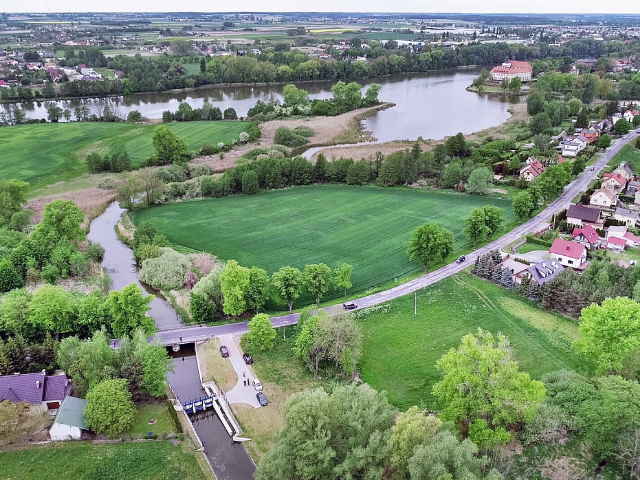Piła is the second, after Bydgoszcz, town where the public consultations were held with respect to the draft of the updated flood risk management plans (uFRMP) for the water region of the Noteć river. According to the information provided during the debate held on 17 March in Piła, 48 activities were provided for altogether, aimed at the flood safety improvement. They include mostly the repairs of embankments and modernisations of hydro-engineering facilities. Three most important activities in the region of the town of Wieleń and Drezdenko will cost close to PLN 100 million.
In the water region of the Noteć river, 4 problematic areas were identified: Noteć–Drezdenko, Noteć–Wieleń, Gwda–Piła, Kruszwica– Gopło–Ślesiński Canal. As many as 3 of them are situated in the area administered by the Catchment Board in Piła. The key activities include the construction and modernisation of the flood embankments in Drezdenko (the cost of ca. PLN 35 million), the embankments of Wieleń (the cost of ca. PLN 30.3 million) and the repair of the so-called relief channel with a bridge within the road no. 177 in that town (PLN 29 million). The latter project consists of a canal being a certain by-pass constructed mostly to ensure safe transport of flood water through the area. The proposed activities correspond to the needs and problems in that area, including e.g. the discontinuity of the embankment downstream Drezdenko, potential failure of the system controlling the device operation (e.g. EW Koszyce), flood hazard caused by the collapse of the hydro-engineering facility (e.g. the dam of the Koszycki Artificial Lake) or the absence of the hydrological-meteorological cover. In the problem area of Noteć-Wieleń, the situation gets more complicated due to the tendency to develop areas subject to a potential threat of flood.
Flood hazard exists regardless of drought
“In Wieleń, many people still remember the events of December 2011. The hazard was caused by a ten-kilometre ice jam on the Noteć river. This year’s abundant snowfall in February and subsequent relatively rapid temperature rise made the residents of the flood-threatened areas anxious again. In Wody Polskie, we need to anticipate such situations and try to minimise the hazard. The pending public consultations concerning the updated flood risk management plans are the best chance to explain any doubts connected with that”, said Agnieszka Siłacz, deputy director for Flood and Drought Protection in Państwowe Gospodarstwo Wodne Wody Polskie, Regionalny Zarząd Gospodarki Wodnej in Bydgoszcz. She stressed that this requires consistent activities and patience when convincing the public to accept the flood-protection activities as the major problem in the catchment area of the Noteć river in recent decades has been not floods, but hydrological drought. “Starting from early 21st century, the catchment area of the Noteć river is the one with the lowest average annual total precipitation amounts in Poland and, consequently, most rivers stay within low water levels and only locally medium ones. However, this does not exclude flood hazard which has been present”, she explained.
Updated FRMP — one of foundations of water management in Poland
The FRMP updated now is, besides the water management plans and the plan of combating drought effects, the third planning document structuring water management in Poland. The first FRMPs were adopted as the regulation of the Council of Ministers in 2016. Their implementation, according to the framework of planning cycles in the EU Flood Directive, will finish this year. The plans updated in this, i.e. second, planning cycle, cover the activities planned for 2022–2027. The public consultations announced on 22 December 2020 by the Minister of Infrastructure and coordinated by Państwowe Gospodarstwo Wodne Wody Polskie will last six month, until 22 June 2021. A crucial part of those plans is the lists of technical and other activities for individual watershed areas. This includes 1,100 items altogether. Those are the documents attracting attention of the debate participants and all stakeholders. The drafts of updated flood risk management plans, complemented with any requests and comments submitted during the consultations (they are submitted simultaneously to the consultation meetings) should be accepted in December 2021 by the regulations of the minister competent for water management.
So far, the debates were held in Kraków, Nowy Sącz, Gliwice, Pszczyna, Gorzów Wielkopolski, Poznań, Kalisz and Bydgoszcz. Subsequent ones will be organised on 23–25 March in Rzeszów, Jasło and Stalowa Wola. Due to the pandemics, the discussions held so far and to be held in March and April will be carried out on-line. When the restrictions are removed, the consultations will have the traditional form. For more information on the consultation visit www.stoppowodzi.pl

